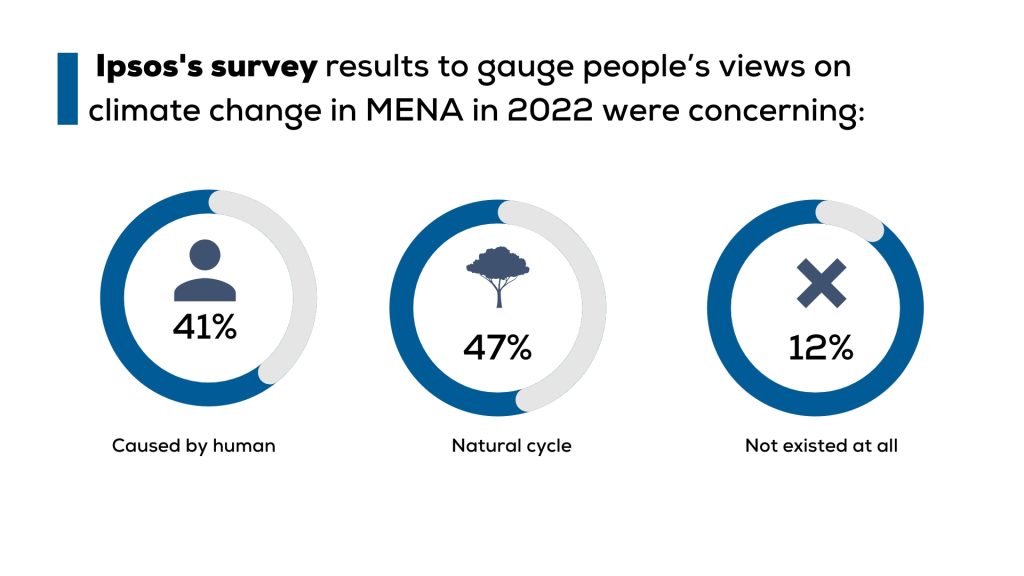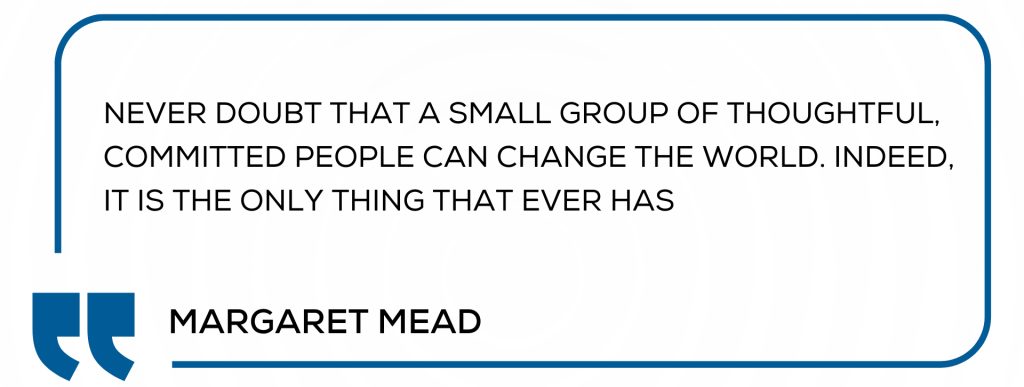Effective strategies for communicating sustainability: Unlocking the power of value-based communication

Sustainability has become a hot topic in our world, with many organizations aiming towards aligning their practices with the principles of sustainability. However, communicating these practices effectively to the public remains a real challenge.
Though it might seem an easy, undemanding issue, it’s somehow tricky to get your audience engaged and willing to take action. Hence, we are sharing some of our experiences to help you have a better understanding of the effective strategies and tools to create a significant and sustainable impact on the environment and how to communicate it to the public audience. So, let’s deep dive to discover the power of the green impact.
Enlightening and concerning insights.
The first thing to be concerned about before communicating any type of data is “knowing your audience” and getting insights into what they are interested in. One of the most valuable resources to understand how people think of climate change in the MENA region is the survey published by Ipsos in 2022 to gauge people’s views on climate change.

Why are environmental communication messages falling short?
The key to making a real impact.
To make a real impact, we need to shift away from typical information-based communication strategies towards value-based and targeted messaging. According to the Ipsos survey, the current approaches being utilized by environmental communicators are not effective, as there is a significant disconnect between the effective strategies we should be implementing as environmental communicators and the current approaches being utilized. The limitations of these approaches are highlighted in a study in the Journal of Environmental Communication, which explores the coastal crisis in Louisiana.
Values, along with worldviews and political ideology, are much more fundamental in shaping views about environmental issues than people’s level of knowledge about the subject. The values your audience already holds influence how they interpret the information they are exposed to and determine whether they accept or reject the need for greater engagement and action.
For instance, instead of saying, “We have to grow more crops to combat climate change,” a value-based message might say, “Growing more flood-resistant crops will mean we have a fair and resilient food system for the benefit of everyone as the climate changes.” This approach not only highlights the importance of growing more crops but also connects this action to the audience’s values of fairness and resilience.
By understanding the values and beliefs of their audience, environmental communicators can tailor their messaging to be more effective and impactful. This requires a shift away from traditional information-based communication strategies towards a more targeted and value-based approach. Through this approach, environmental communicators can make a real impact and inspire lasting change.
Time for value-based strategies
To effectively convey your message through values, here are some best practices for value-based environmental communication:
- Lay the foundation
Give people the facts they need to understand environmental issues and why they matter. A base level of knowledge is essential for inspiring sustained pro-environmental behaviour.
- Keep it local
People are more likely to engage emotionally with local examples of environmental impacts. So, highlight local animals, birds, and fish that may be affected by environmental changes.
- Partner-up
Reports have shown that residents often feel ignored by authorities. Thus, building relationships with local partners based on mutual trust has become a key to communicating complex environmental projects.
- Tailor your message
Traditional communication methods may fall short when it comes to mobilizing citizens about many environmental issues. Tailor your message to specific target audiences for maximum impact.
- Keep your language simple
Using simple and easy-to-understand language when discussing complex environmental issues is an important technique for science communicators that can help simplify the message and make it more relatable.
- Study your audience
Know more about your audience in order to communicate with them effectively. Get inside their heads and learn what drives them, what they care about, and what they value to make sure your message speaks directly to their concerns about the environment. Also, try to find out how your target audience perceives the issue and use that information to craft appropriate “hooks” (concepts, ideas, metaphors) in your writing. This way, you can rest assured that people will hear and remember what you have to say.
- Action Knowledge
It could be achieved through two major acts:
- Inspire Pro-Environmental Behavior
Environmental psychologists recommend empowering people to take action on environmental issues through both individual-level and community-level communication strategies.
So, what you can do is to make them aware that their actions will make a difference while educating them on the results of that action so they feel like they own the problem and can help solve it. It’s also important to get them to believe in their ability to carry out the required behaviour. - Bring the impact of environmental behaviour to life
Let the audience see the impact of their behaviour, imagine understanding your energy consumption in terms of everyday items like AA batteries or visualizing the real-world effects of your actions through stunning graphics.
Empowering individual action starts with giving people specific, tangible steps to take and providing feedback on their performance.
- Listen to your audience!
When it comes to environmental communication, the first thing to hit your mind is how to “tell” people your message. Although “telling” is an important aspect, listening to your audience is another crucial point that needs to be highlighted.
By actively listening to your audience, you’ll gain a deeper understanding of how they perceive environmental problems and what motivates them to take action. By taking the time to truly hear their concerns and ideas, you’ll be able to craft solutions that resonate with them and empower them to make a difference. Your audience has valuable insights to share.
Common pitfalls in environmental science communication
- Stereotyping
There are various types of stereotypes; gender, racial, religious stereotypes, etc.
An example of stereotyping the audience would be assuming that all rural communities are not interested in conservation efforts and only care about economic development instead of taking the time to understand their unique perspectives and concerns.
Also, assuming that all rural communities are uneducated and unwilling to adopt sustainable practices and dismissing their traditional knowledge and practices is considered a kind of stereotyping for the audience.
- Jargon
Subjecting your audience to complicated terms might leave them confused and consequently ruin the message you want to convey. If they don’t easily understand what you’re trying to tell them, you might be missing the chance to make a difference.
- Controversial and polarizing issues
Unless you want to divert your audience’s attention from your main message to debatable issues, try to avoid controversial topics such as religious preferences or political issues.
- Direct mentioning of climate change
Avoid mentioning climate change directly. Instead, stick to specific, non-partisan issues that resonate with your audience, such as energy security and flood risks for political conservatives.
- Negative appeals
These can negatively affect your message by making people resistant to taking action.
For example, try to frame climate change as an opportunity for innovation and economic development instead of framing it as a grave environmental risk or a public health threat.
As we wrap up, we come to the conclusion that there is no single optimal strategy for conveying environmental science, as cultural norms and environmental difficulties unique to each area must be taken into account. So, the real challenge is to define the tools and practices necessary to effectively disseminate information about environmental trends in your area.

